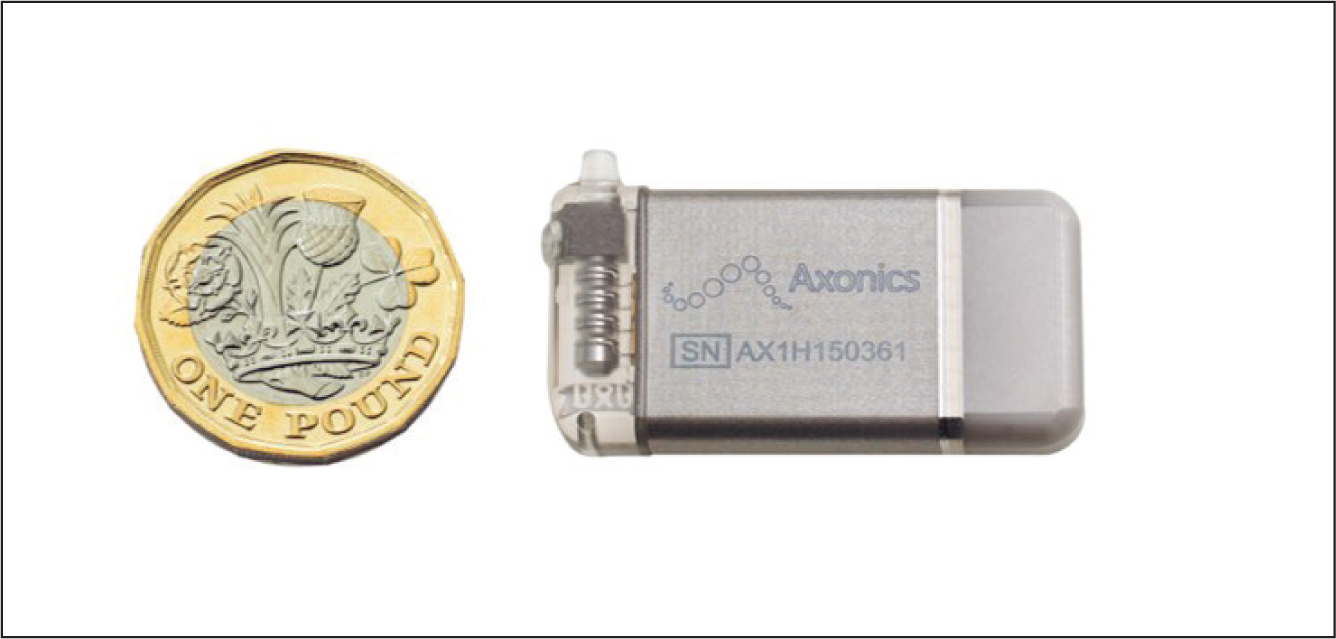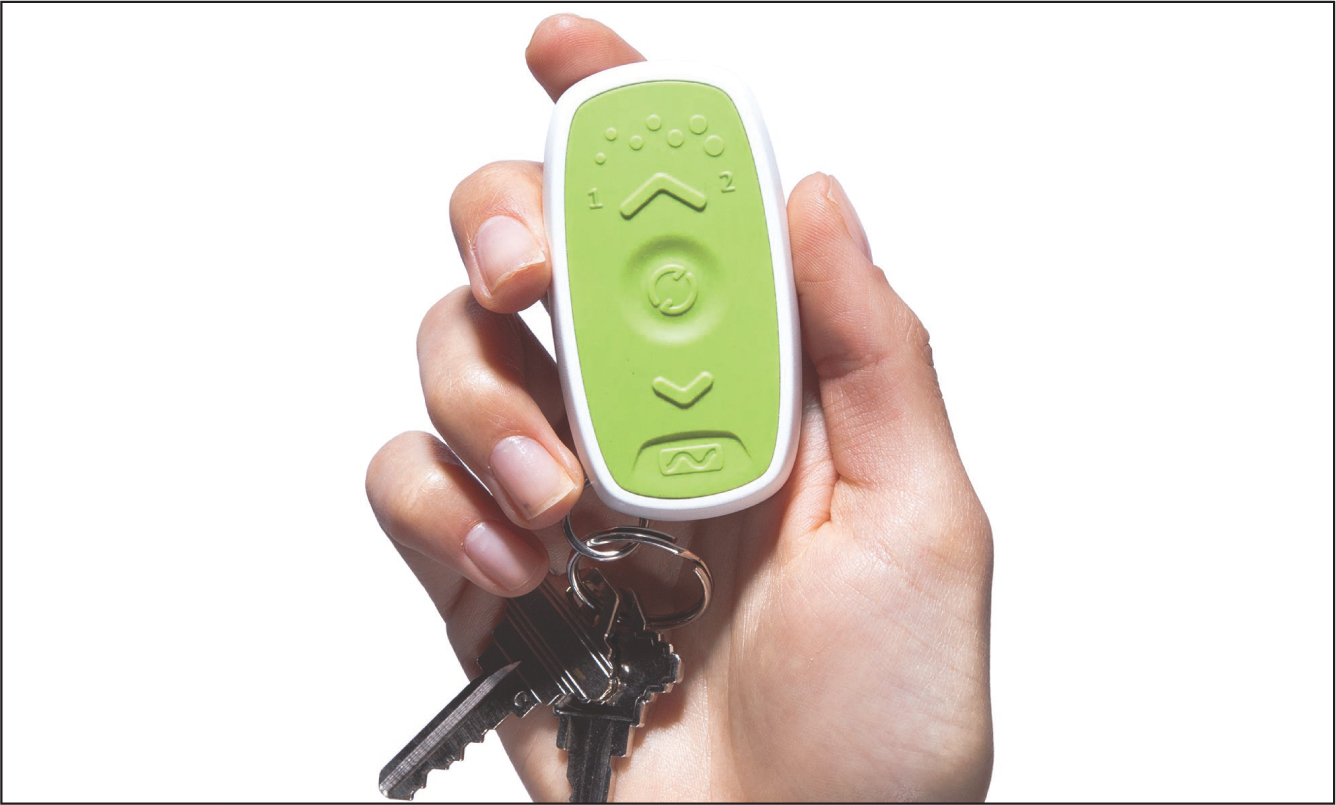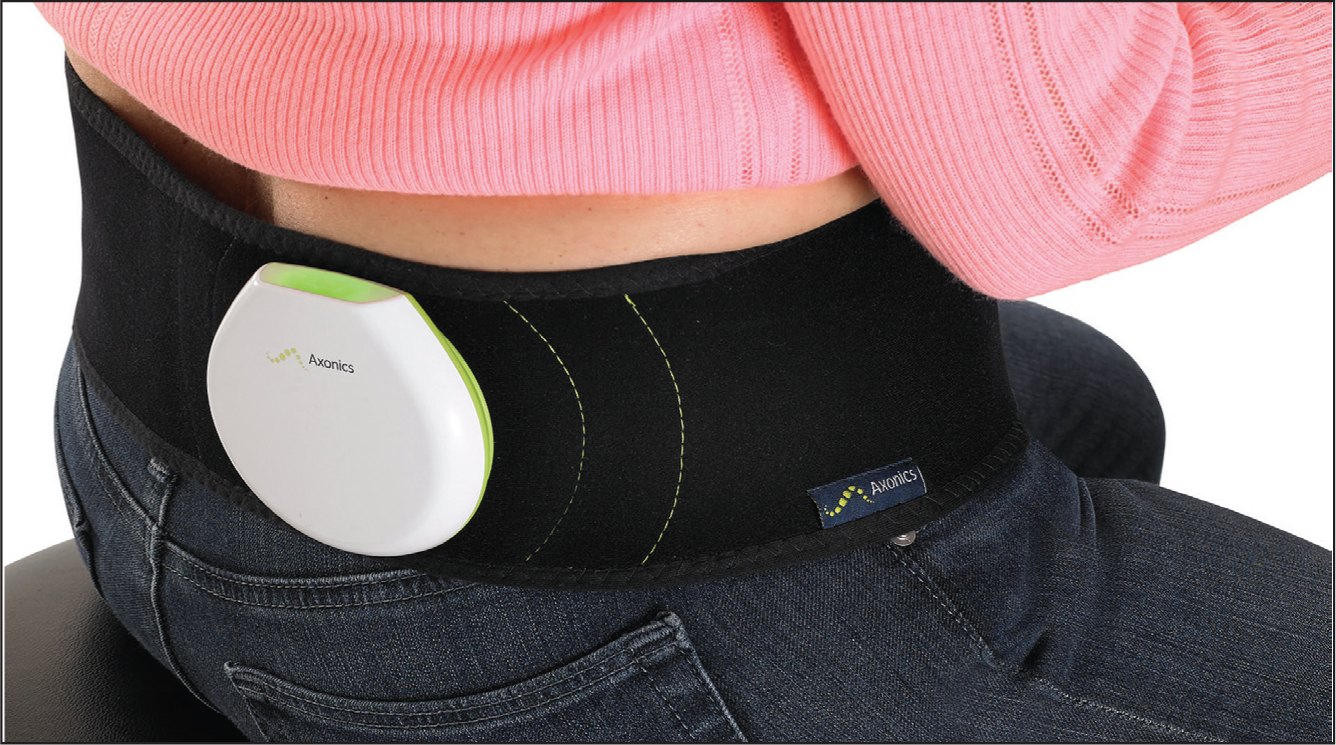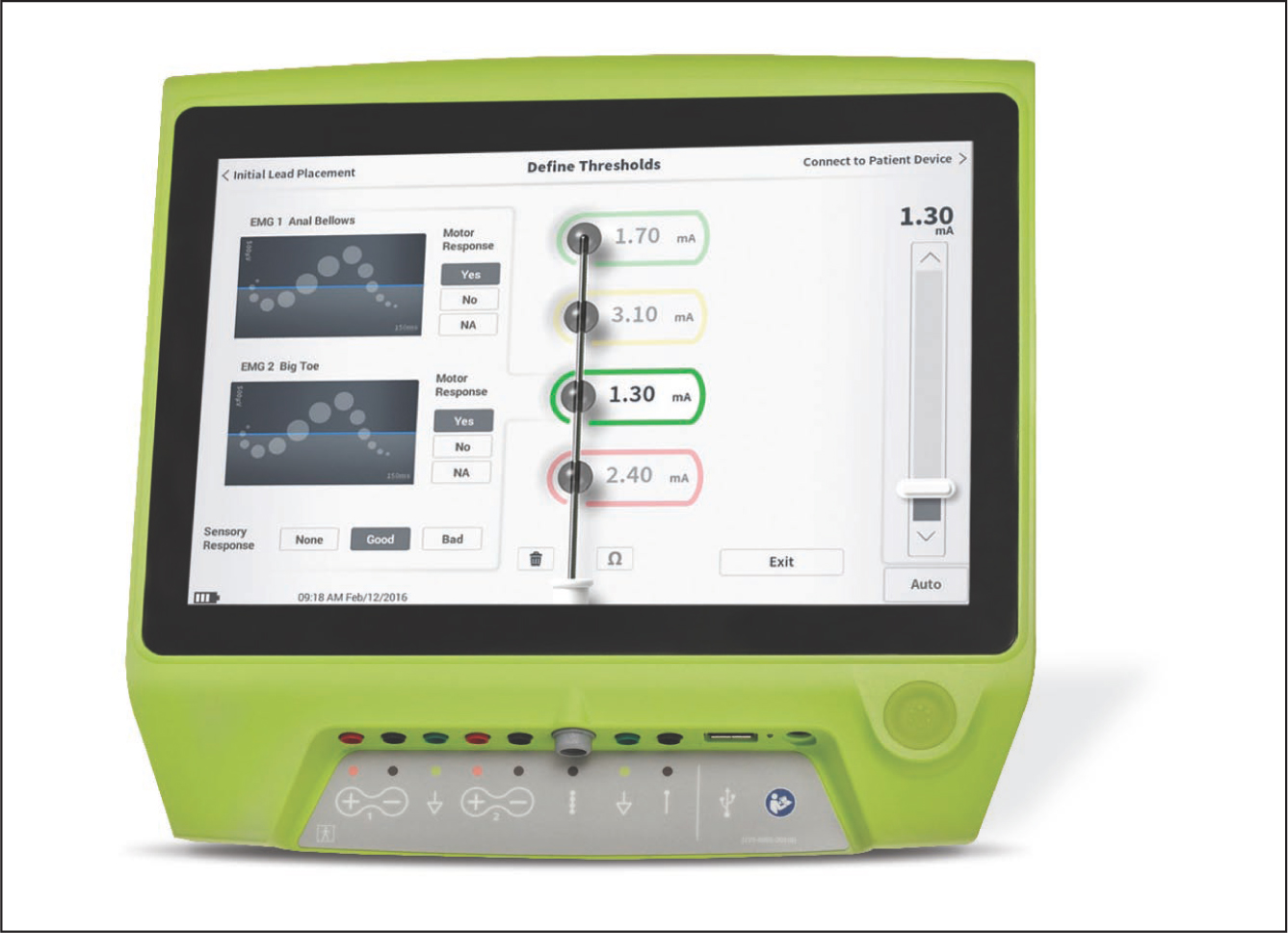Sacral neuromodulation (SNM), also known as sacral neurostimulation, is a therapy used to help improve bladder and bowel function. It is one of the treatment options for overactive bladder (OAB) and has been proven to significantly improve quality of life (Benson et al, 2020).
Throughout the UK, bladder problems including OAB are common but are often not discussed. Bladder problems may be related to other medical conditions and can affect anyone at any stage of life (Bladder and Bowel UK, 2019). Most people do not access primary care services with bladder problems because they feel nothing can be done, plus it is a difficult subject to speak about or embarrassing.
SNM therapy received a CE mark for urinary dysfunction in 1994 and around 325 000 patients worldwide have been treated with it (Blok et al, 2020). SNM has been undertaken at Salford Royal NHS Foundation Trust since 1999, with the first permanent implantation procedure performed in early 2000. The trust has been carrying out this procedure longer than most units in the world.
SNM is a guideline recommended treatment for OAB and idiopathic chronic non-obstructive urinary retention. The following National Institute for Health and Care Excellence guidelines for SNM are used: Sacral Nerve Stimulation for Idiopathic Chronic Non-Obstructive Urinary Retention (NICE, 2015a), Sacral Nerve Stimulation for Urge Incontinence and Urgency-Frequency (NICE, 2004) and the recently released Axonics Sacral Neuromodulation System for Treating Refractory Overactive Bladder (NICE, 2020a).
SNM involves electrical stimulation of the sacral nerves that carry signals between the pelvic floor, spinal cord and the brain. It is thought to normalise neural communication between the bladder and brain but its precise mode of action in humans remains uncertain. Unlike oral medication, which controls the muscular component of bladder control, SNM offers control of symptoms through direct modulation of the nerve activity.
For the purpose of this article, the newly released National Institute for Health and Care Excellence guidance, Axonics Sacral Neuromodulation System for Treating Refractory Overactive Bladder (NICE, 2020a) will be reviewed as part of the OAB treatment pathway.
Overactive bladder
The lower urinary tract system is made up of the bladder and urethra. Its two main functions are storage and voiding. If the bladder or urethra are disturbed, lower urinary tract symptoms (LUTS) occur.
OAB is a common bladder condition that affects both men and women. It can be defined as the uncontrolled need or urge to urinate. The bladder detrusor muscle usually contracts either too often or unexpectedly and involuntarily. Most patients describe symptoms such as the need to pass urine more frequently with or without urgency as well as possible incontinence. Other symptoms may include nocturia or nocturnal enuresis.
The overall prevalence of OAB in one of the largest population-based surveys was 11.8%. Rates between men and women were similar and increased with age (Irwin et al, 2006). Many people with OAB find their life is controlled by their bladder and most will not travel too far away from home out of fear of not knowing where the next toilet is; it can have a debilitating affect on their social life, work life, exercise and sleep (Urology Care Foundation, 2019).
Investigations
Investigations for OAB differ slightly between men and women. Before referral to secondary care, basic tests such as a urinalysis and a midstream urine sample should be done to rule out infection. A bladder ultrasound scan should also be undertaken to check bladder emptying. For men with LUTS involving urinary retention, investigations for prostate cancer or benign prostatic hyperplasia need to be carried out first, with basic tests such as a bladder scan, digital rectal examination and a prostate-specific antigen blood test (NICE, 2015b).
Treatment
Women and men with OAB should complete a bladder diary, undertake lifestyle modifications including reducing caffeine intake and try bladder retraining techniques as a first-line treatment option (NICE, 2015b; 2020b).
Bladder diaries should be kept for 3 days. A bladder diary is a useful tool to gain an insight into patients' frequency, voided volumes, nocturia, episodes of leakage and impact on daily life. It is an inexpensive tool that provides valuable information to determine how best to manage patients' symptoms (Park and Chapple, 2019).
Lifestyle modifications can include limiting certain types of fluids and foods, including caffeine, fizzy drinks, alcohol and some tomato-based or spicy foods. A study by Dallosso et al (2003) concluded that lifestyle modifications can improve and prevent OAB and incontinence symptoms. Increasing physical activity level, weight loss and stopping smoking are also considered as lifestyle modifications associated with OAB.
The purpose of bladder retraining is to train the bladder into holding larger amounts of urine with the aim of reducing frequency. The idea is to gradually delay voiding. Bladder retraining can also help reduce leakage and urgency. Referral to pelvic health physiotherapy should be considered at this point for patients with urinary leakage. If the patient reports no improvement in their symptoms following lifestyle modifications, second-line treatment with anticholinergic and antimuscarinic medications such as oxybutynin, tolterodine or solifenacin can be considered, as well as beta-3 agonist mirabegron.
NICE (2020b) recommends an anticholinergic medicine with the lowest acquisition cost. OAB medications should make symptoms more manageable if the side effects such as dry mouth can be tolerated (Wagg et al, 2012). A study by Yeaw et al (2009) that looked at the compliance of taking long-term medicines found that around 70% of patients stop taking OAB medications within 6 months because of side effects and/or a lack of efficacy.
Urodynamics
Before third-line OAB treatment options are considered, at least two pharmacological options should have been tried. NICE (2020b) recommends offering urodynamics at this point. Urodynamic studies can provide functional information as well as ruling out bladder outflow obstruction.
Urodynamic studies can only be interpreted with a detailed clinical history and may help with making future treatment decisions (Chapple et al, 2019). For both men and women, if OAB is confirmed with urodynamics, minimally invasive procedures can be offered if symptoms have not responded to all non-surgical and conservative options.
The effectiveness and cost effectiveness of urodynamic investigations in the management of women with refractory OAB symptoms is being evaluated in the FUTURE (Female Urgency, Trial of Urodynamics as Routine Evaluation) study, which is a randomised clinical trial to run by the University of Aberdeen with NHS Grampian (https://w3.abdn.ac.uk/hsru/FUTURE/Public/Public/index.cshtml).
Surgical options
Surgical options include botulinum toxin type A intradetrusor injections, SNM, augmentation cystoplasty (NICE, 2015b) or urinary diversion (NICE, 2020b) following a multidisciplinary team review. To be eligible for botulinum toxin injections or a cystoplasty, most patients will need to learn intermittent self-catheterisation (ISC). The author's centre uses botulinum toxin type A (Botox, Allergan, Dublin).
Botulinum toxin is given via a cystoscope and injected into the detrusor muscle in the bladder wall. The procedure can be uncomfortable but takes around 15 minutes and is given under local anaesthetic catheterisation gel (Rovner, 2014). Patients can go home after the procedure and, in most hospitals, it is done in outpatient departments. Botulinum toxin lasts around 4-12 months and works for around 70% of patients with a 6-20% likelihood of needing to perform ISC (British Association of Urological Surgeons (BAUS), 2020a).
A cystoplasty, where a piece of bowel is used to increase bladder capacity, is a more invasive procedure and requires a general anaesthetic. BAUS (2020b) advises that between one in two and one in 10 patients will require ISC and there is a 10% risk of failure to improve symptoms significantly.
Sacral neuromodulation can be offered if the patient is unwilling to receive botulinum toxin due to the risk of ISC or if botulinum toxin has failed. Balchandra and Rogerson (2014) found that the most popular reason for choosing SNM over botulinum toxin was the risk of retention requiring ISC and the need for repeated treatments with botulinum toxin. They concluded that patients who chose SNM over botulinum toxin wanted a long-term solution.
Sacral neuromodulation
SNM works by delivering electrical current, via an implanted device, to stimulate the sacral nerves (NICE, 2015a), (Matzel et al, 2017).
SNM is performed in two stages. The first is a trial phase and the second is the permanent implantation phase. The trial phase, also known as a peripheral nerve evaluation (PNE), is used to assess the efficacy of neuromodulation and is the only way of gaining an indication as to whether long-term SNM may be effective for the patient.
The trial phase involves a temporary PNE lead inserted under local or general anaesthetic into the sacral foramen around the S3 nerve (Fletcher, 2020). A dressing is applied to secure the lead which is then attached to an external pulse generator. The level of stimulation is adjusted to achieve normal voiding of urine while avoiding discomfort for the patient. The trial phase lasts around 7-10 days and patients should complete a bladder diary for assessment at the trial evaluation.
If the trial is successful, the patient will be considered for a permanent implant device.
A permanent quadripolar electrode will be implanted close to the S3 sacral nerve. The electrode is then connected to the neurostimulator/implantable pulse generator (IPG) which is inserted into a subcutaneous pocket through an incision in the upper buttock (Figure 1).
If the trial is equivocal or if PNE fails, a two-stage trial may be offered. The two-stage technique involves implanting a permanent tined lead under a general anaesthetic that is then connected to an external neurostimulator (ENS). The main advantage of this is the permanent wire has small fixation points called tines, which make it less likely to move out of position during the trial phase. However, the patient will have to return to theatre for a further general anaesthetic to either have the tined lead removed if unsuccessful, or to connect to a permanent neurostimulator. The permanent procedure is performed under a general anaesthetic often as a day-case operation.
One permanent neurostimulator in the market is the Axonics System (Figure 2). Historically, the only neurostimulator available in the UK was the Medtronic InterStim II (Medtronic, Dublin) non-rechargeable IPG, which has a lifespan of 5 years. However, in June 2016, the Axonics System received a CE mark as a class 3 medical device (NICE, 2020a). This gave patients two permanent SNM device options. Medtronic now also offers the rechargeable InterStim Micro system, but there is no published evidence for the use of the Micro within or outside the NHS, although the author understands some studies are being carried out.

The Axonics System
Axonics (https://www.axonics.com/hcp, Irvine (CA)) is a medical device company that provides solutions to treat urinary and bowel dysfunction and improve quality of life for patients and their families. The Axonics System is a rechargeable neurostimulator that lasts for at least 15 years (NICE, 2020a). This means the implant will need replacing less frequently so patients will require surgery less often than those using the non-rechargeable system. The neurostimulator is small (about 5 cm3 in volume) and full-body MRI conditionally safe.
Patients use a handheld remote control to adjust the stimulation (Figure 3). The neurostimulator needs to be recharged every 1-2 weeks using a wireless charger through the skin (Figure 4). Practitioners use the smart clinician programmer (Figure 5), a colour touch-screen tablet used for lead placement, programming and adjusting therapy. Clinicians should receive training from Axonics to implant and use the programmer. Videos and education materials are available on the healthcare professional area of the Axonics website.



NICE's Axonics Sacral Neuromodulation System for Treating Refractory Overactive Bladder (2020a) guidelines are based on clinical trials showing that the Axonics System improves the symptoms of refractory OAB and quality of life. Within the guidance, the main two clinical trials discussed were the ARTISAN-SNM (McCrery et al, 2020) and the RELAX-OAB (Blok et al, 2019).
ARTISAN-SNM study
The ARTISAN-SNM (Benson et al, 2020) study, which included 19 centres in the US and Europe (the Netherlands, Belgium, France and the UK) over 12 months, evaluated the safety and effectiveness of the Axonics System.
The 129 patients who met the inclusion criteria were implanted with the Axonics tined lead and rechargeable sacral neuromodulation system. Data were collected using the validated ICIQ-OABqol (International Consultation on Incontinence Questionnaire Overactive Bladder quality of life) questionnaire, a 3-day bladder diary and a satisfaction questionnaire. A successful response to the therapy was defined as a 50% or greater improvement in symptoms..
After 6 months, 90% of participating patients had experienced significant improvements in urinary urgency and incontinence symptoms. After 12 months, 89% of the participating patients were experiencing ≥50% improvement in symptoms. It was concluded that the Axonics SNM system was safe and effective after 1 year (Benson et al, 2020).
RELAX-OAB Study
The RELAX-OAB study included seven centres in Europe (in the Netherlands, Belgium, France and the UK) and had a follow up of 2 years. Like the ARTISAN-SNM study, the RELAX-OAB had a similar inclusion/exclusion criteria and also used the validated ICIQ-OABqol questionnaire, a 3-day bladder diary and a satisfaction questionnaire.
After 1 year, 94% of patients continued to have a symptom response. After 2 years, 90% of patients experienced ≥50% improvements in symptoms, and overall patient satisfaction was 93% (Blok et al, 2020).
Both studies reported scores for the ICIQ-OABqol. The ARTISAN-SNM reported an average score improvement of 34 points at 1 year and RELAX-OAB reported an average improvement of 29 points at 2 years. Both of these studies concluded that the Axonics System improved the patients' qualify of life.
Cost-effectiveness
According to research by Harries (2020), the total cost for patients with OAB aged 18 years and above in the UK, parts of Europe and Canada is around €2.1 billion (£1.92 billion) a year; by the end of 2020, this could increase to €5.2 billion (£4.75 billion).
The NICE guidance on the Axonics System (2020a) states the Axonics System may have some cost advantages. Using a cost-consequence model, Noblett et al (2017) found the Axonics SNM system demonstrated a cost savings over 15 years of £6038 per person. This is based on the Axonics System battery life lasting longer than 6 years as that is when that cost savings will occur. The NICE guidance concludes that the Axonics System demonstrates a cost saving to the NHS compared to standard care (NICE, 2020a). However, the cost savings are uncertain because there is no further published evidence.
Case studies
The following patients were chosen at random and no identifiable information is used to protect confidentiality. All the patients had chosen the Axonics System to treat their bladder dysfunction. Some follow-up is on hold because of COVID-19.
Case study 1. Woman aged 61 years
This patient was referred to urology by her GP in September 2009 with a 7-year history of progressively worsening urinary leakage and storage symptoms. She was voiding hourly throughout the day and four times at night with significant urgency with no warning. She had to wear large pads, which she changed three times a day. She was initially referred to pelvic floor physiotherapy and started on an anticholinergic. In March 2010, she had urodynamics that confirmed OAB and slight loss of bladder compliance. A second type of anticholinergic was recommended. There was no improvement in symptoms from either anticholinergic and, in June 2010, she was listed for botulinum toxin injections. She had botulinum toxin from July 2010 to November 2018. She has a past medical history of a hysterectomy, bilateral salpingo-oophorectomy, previous endometriosis and three caesarean sections.
She was seen in the sacral neuromodulation clinic by the urology doctor in February 2019 and listed for a trial of SNM. She had a PNE under local anaesthetic in April 2019 with two leads inserted at the S3 and S4 nerves for two weeks. She had success with the trial for the first 5 days or so.
As she experienced a 50% improvement in symptoms, she was listed for a permanent device and chose the Axonics System. She was implanted in July 2019. The operation note states the S3 readily was found on the right side. She returned to the outpatient clinic in August 2019 with the urology specialist nurse and the local Axonics representative for activation and a programme was set up and adjusted according to response. In October 2019, she was seen in the outpatient clinic again with the urology doctor and the local Axonics representative.
She has had a good response from her device, seeing a reduction in frequency and being able to hold her urine for a longer period of time. In May 2020, she had a consultation by telephone because of COVID-19. She is managing well and finds that her device manages her symptoms most of the time.
Case study 2. Woman aged 21 years
This patient was referred for consideration of SNM in February 2018 from another hospital. She has a history of recurrent urinary tract infections, previous episodes of retention of urine following surgery, difficulty in voiding and performing ISC, and pelvic pain, possibly related to her bladder. She had an urodynamic assessment in October 2017, which revealed no storage abnormality but was unable to void or generate a bladder contraction. She was listed for a trial of SNM but this was initially delayed because of a possible pregnancy.
She had a PNE under local anaesthetic in June 2019 with one lead inserted at S3 for one week. On the first 2 days she went from self-catheterising four times daily, usually with some intermittent voiding in between, to being able to void normally without the aid of self-catheterisation. As she had a more than a 50% improvement in symptoms, she was listed for a permanent device and chose the Axonics System because it was rechargeable nature and its potential to last 15 years. This was implanted in November 2019 and activated in the outpatient clinic in December 2019, where she was seen by the urology doctor and Axonics company representative and a programme was generated. She was followed up in the outpatient clinic in January 2020 where her device was working well. She is voiding well and doing ISC occasionally. Follow-up has been arranged for 12 months.
Case study 3. Woman aged 42 years
This patient was referred from another hospital for consideration of SNM in May 2019. She has a history of OAB treated with botulinum toxin requiring ISC and a tension-free vaginal tape procedure (many years ago but the date not documented). Her previous symptoms of stress incontinence are no longer present. She is having botulinum toxin for her urge incontinence and has to undertake self-catheterisation. The botulinum toxin tends to last 2–3 months then her symptoms recur.
She had a PNE in August 2019 under local anaesthetic with two leads inserted at the S3 and S4 nerves for two weeks. On discussion with the patient at her evaluation appointment, it would appear that she has remained dry for the majority of the time at night compared to when she would often wake up wet. She has also experienced a reduction in overall frequency during the day and, given these results, would like to pursue the option of a permanent device.
She chose the Axonics System. She had this implanted in February 2020. The operation note states this was at the S3 on the left side. She had this activated and programmed in the outpatient clinic in March 2020. In June 2020, she had a telephone consultation because of COVID-19. She is managing well with her SNM device and has noticed a significant improvement in her symptoms at night. She no longer leaks and it gives her good symptom control.
Conclusion
SNM is a safe, effective treatment for OAB. SNM therapy is not a cure, but patients can experience significant improvement in symptoms and quality of life
The NICE guidance on the Axonics System for treating refractory OAB (2020a) has sufficient evidence to suggest that the Axonics System may have cost advantages for the NHS 6 years after initial implant.
SNM can significantly improve patients' quality of life and can give life-changing results as well as helping patients to gain control of their condition. Studies found that 93% of patents were satisfied with SNM therapy (Benson et al, 2020).

